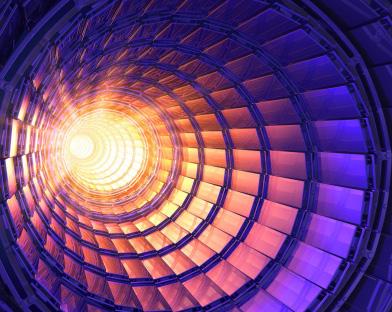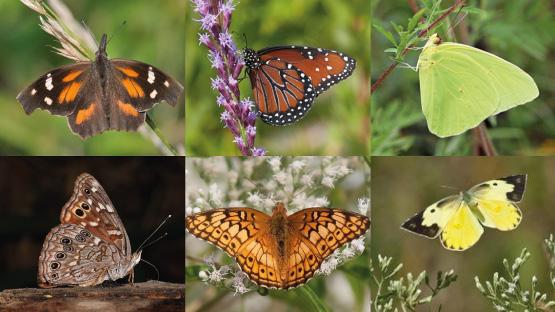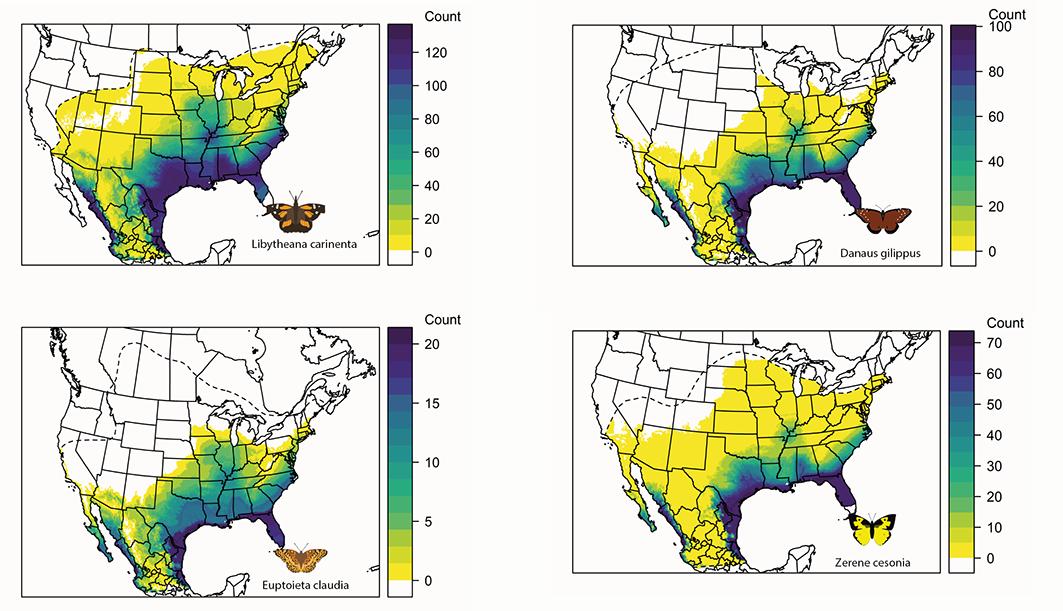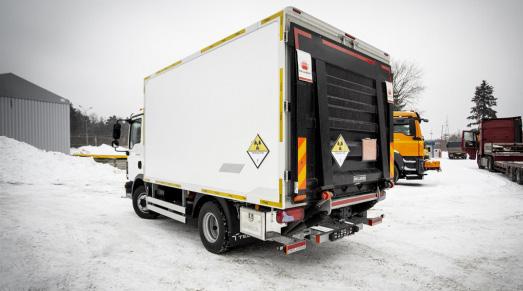
14 minute read
IAEA News
from Zoonotic Diseases
by IAEA
IAEA Member States get special access to OECD/NEA nuclear software and data
The Nuclear Data pipeline (artist’s view).
(Photo: NEA)
IAEA Member States that are not members of the Nuclear Energy Agency of the Organisation for Economic Co-operation and Development (OECD/NEA) are enjoying access to a vast array of OECD/NEA nuclear science software packages and databases thanks to a special arrangement between the two organizations.
As part of the arrangement, under which more than 25 requests per month are handled, IAEA Member States can access a wide range of modelling tools from the OECD/NEA Data Bank to support national activities in nuclear science, from spent fuel composition analysis to nuclear data visualization.
“This service is helping Brazil’s National Metrology Laboratory of Ionizing Radiation (LNMRI) to simulate the response of ionizing radiation measuring instruments by facilitating access to updated computer codes,” said Evaldo Simões da Fonseca of the LNMRI. “These simulations are one of the steps needed to ensure the calibration and traceability of the radiation beams used in thousands of treatments and diagnoses performed in Brazil every year.”
The OECD/NEA Data Bank compiles, tests and disseminates over 1400 software packages, which have been developed by experts in more than 40 countries, and organizes training courses on widely used programmes to enhance nuclear knowledge sharing and preservation. Experts requesting access receive the packages in DVD form.
The tools have applications in a wide range of disciplines, from nuclear energy to medicine. They include the exhaustive Spent Fuel Isotopic Composition (SFCMPO) database, which contains details on the make-up of various types of spent fuel, and the International Reactor Physics Handbook Database and Analysis Tool (IDAT), which facilitates the study of nuclear reactor dynamics according to variables such as core configuration.
“The OECD/NEA Data Bank has a wealth of highly useful databases and analytical tools, and their renewed availability to Member State institutions is a boon to the scientific community,” said Mikhail Chudakov, IAEA Deputy Director General and Head of the Department of Nuclear Energy. “We look forward to continuing to build on what has been a very productive, mutually beneficial partnership.”
Countries that are not part of the OECD or the OECD/NEA can benefit from the service, which is operated through the IAEA’s International Nuclear Information System (INIS). It provides access to all packages in the Data Bank archives, with the exception of those developed in the United States of America. Guidelines have been drawn up to assist IAEA Member States in requesting access to the Data Bank.
“The Data Bank services available to IAEA countries outside the OECD/ NEA’s membership is a solid example of the excellent cooperation between the two agencies,” said William D. Magwood IV, Director-General of the OECD/NEA. “This arrangement bolsters the OECD/NEA Data Bank’s mission to foster the international exchange of scientific knowledge.”
Peaceful Uses Initiative
The service is supported by Peaceful Uses Initiative (PUI) funding from the United States of America. Since 2010, extrabudgetary contributions made through the PUI have been used to support a wide variety of IAEA activities aimed at promoting broad development goals in Member States.
— By Babatunde Adigun
Boosting tea plant diversity, quality and resilience in Sri Lanka

Tea was first introduced to Sri Lanka by the British in the 1820s and commercialized in 1867. Today, the tea industry is the country’s leading foreign exchange earner and employs, directly or indirectly, two million Sri Lankans.
(Photo: Tea Research Institute of Sri Lanka)
Above all things, Sri Lanka is known for its tea. Introduced in the 19th century, Ceylon tea is today a multi-billiondollar industry that brings in wealth and tourism. The country has plans to expand tea production and improve tea quality, but faces serious challenges from climate change and increasing global market competition. Scientists in Sri Lanka, through the IAEA’s technical cooperation programme, are now looking to a nuclear technique to overcome these obstacles by enhancing tea plant productivity through increased genetic diversity.
Leading this effort is Mahasen A.B. Ranatunga, Head and Principal Research Officer at the Tea Research Institute of Sri Lanka’s Plant Breeding Division. His institute is continuously looking for ways to develop and cultivate new breeds of tea. “Because tea is not native to Sri Lanka, there isn’t much genetic diversity, and, despite our enormous tea output, we only have seven different types of regional tea. Working with the IAEA and the Food and Agriculture Organization of the United Nations (FAO), we’re hoping to use new nuclear techniques, alongside conventional ones, to increase our island’s tea diversity,” Ranatunga said. Improving genetic diversity is important because genetically diverse crops are more resistant to diseases and can be more adaptive to changing weather patterns.
Inducing diversity
The nuclear technique Ranatunga is banking on is single-cell induced mutagenesis, an irradiation method involving a radioactive source and single plant cells. Using irradiation to develop new plant varieties is not new and has been used successfully around the world since the 1950s. What is new is adapting the technique for crops that live longer than two years — perennial plants.
“In Asia and the Pacific, irradiation is often used on seed crops, but there has been a bottleneck on its use in crops that are not propagated from seeds,” said Shoba Sivasankar, Head of the Plant Breeding and Genetics Section at the Joint FAO/IAEA Centre of Nuclear Techniques in Food and Agriculture. Cultivating new plants from clippings is more complex than using seeds and requires specialized knowledge and equipment. Sivasankar’s team is developing procedures to help experts from all over the world induce genetic diversity in perennial and tree crops using single-cell mutagenesis and regeneration, with important work recently conducted on coffee.
The technique uses individual cells from parts of tea plants not typically used in reproduction, including from leaf clippings. These cells are isolated in a suspended liquid medium and irradiated. The radiation spurs genetic mutations, and, when these single cells are then ‘cultured’ — grown and propagated — into collective tissue, they are genetically uniform. “Developing genetic diversity this way is less complicated and much faster than more conventional tissue culture techniques,” said Sivasankar.
Facing climate change
The time frames offered by the nuclear technique — a new strain of tea can be developed in just ten years — are important, as Sri Lanka’s tea industry faces pressures that could affect its position as a leading producer of one of the world’s most widely consumed drinks (second only to water).
“Traditionally, one of the biggest threats we’ve faced is a disease called blister blight, but that typically only impacts some areas and primarily during wet seasons. We’re concerned about the effect climate change will have on this, making blister blight more frequent and widespread, potentially impacting the quality of our tea,” said Ranatunga.
“Some of the tea varieties we’re hoping to develop will be able to deal with this change, particularly moisture variation, high temperatures and drought,” he added. The Tea Research Institute of Sri Lanka’s priority in using induced mutagenesis will be to increase tea yield, quality and resilience in order to mitigate the severity of these impacts.
This is the first time that the Joint FAO/IAEA Centre has supported a project on tea crop improvement using induced mutagenesis. The project’s impact and lessons could help guide other countries considering enhancing their tea production using the technique.
For Sri Lanka, the severity of the effects of climate change on tea could critically impact the country’s economy. Tea is the leading foreign exchange earner in the country, and two million Sri Lankans, roughly ten per cent of the country’s population, are directly or indirectly employed in the tea industry. Furthermore, up to 70 per cent of Sri Lanka’s tea production comes from smallholders, who are likely less able to weather the effects that climate change brings. Ranatunga says that they have identified some tea cultivating areas on the island that may be vulnerable to climate change and that they expect these areas to be severely affected.
Action is under way, and the IAEA’s collaboration, through its technical cooperation programme, with the Tea Research Institute of Sri Lanka primarily involves helping train staff to use and establish the facilities for single-cell mutagenesis. Mykola Kurylchyk, the IAEA’s Programme Management Officer for Sri Lanka, said that, even though the COVID-19 pandemic has delayed some of this training, the IAEA’s support has helped establish the laboratories needed to undertake this fouryear project.
“This is a good opportunity for us and the first time that Sri Lanka has used a technique like this on a plantation crop. We believe this will have a far-reaching impact on a critical industry,” said Ranatunga.
— By Michael Amdi Madsen
Mexico: Butterfly migration studied using IAEA data
An IAEA database and the use of stable isotope methods are making it possible for scientists to determine the migration path of several types of insects, including butterflies. In a paper recently published in the journal Diversity, a group of scientists presented the results of a study on the migration of six species of butterflies, from Canada and the United States of America to Mexico. It is the first study of its kind to establish the origins and migration paths of several butterfly species in Mexico. Based on this scientific data, authorities can develop strategies to protect these insects on their journey.
“Knowing where butterflies come from during migration helps to inform conservation strategies that may be needed to protect the resources in their breeding areas. Similarly, knowing where they go in winter helps to protect those habitats during the time they are there,” said Leonard Wassenaar, former Head of the IAEA’s Isotope Hydrology Laboratory. “The linkage between geographic locations in the annual life cycle of butterflies cannot be established without using isotope methods.”
The research is based on measuring deuterium — a rare isotope of hydrogen — in rainwater, which is directly ingested by animals and humans. As rainwater and its deuterium composition are unique to the area where it rains, rainwater deuterium content serves as a direct marker that scientists can use to identify the origin of individual animals that were born in different areas by measuring the amount of deuterium in hair, wings, claws, feathers or bones. For

Scientists studied the migration of six species of butterflies using isotopes: the American snout butterfly (Libytheana carinenta), the queen butterfly (Danaus gilippus), the cloudless sulphur butterfly (Phoebis sennae), the Empress Leilia butterfly (Asterocampa leilia), the variegated fritillary butterfly (Euptoieta claudia) and the southern dogface
butterfly (Zerene cesonia). (Photo credits: S. Bright, V. Charny, J. Gallagher and J. Green)
butterflies, the deuterium content is measured in the wings and shows the area where an insect was born.
While isotopes have been used for decades to establish with precision the migration paths of some insects, such as the monarch butterfly (Danaus plexippus), the migration patterns and paths of dozens of other species of butterflies, insects and other migratory animals have yet to be established in Mexico and in other countries.
Butterfly migration patterns: chain, leapfrog and panmixia
The study revealed that, to survive the winter, four out of the six butterfly species travelled from the North of the United States of America or from Southern Canada to Mexico. The study also revealed further information on the migration style of the butterfly species.
The study found that the American snout butterfly (Libytheana carinenta) had the longest migration route and that its migration was a ‘chain migration’. This means that American snout butterflies born in the northern parts of the subcontinent were found to settle in Mexico for the winter only after those born in the southern parts had already migrated further south.
The queen butterfly (Danaus gilippus), on the other hand, was observed to have performed ‘leapfrog migration’ within the subcontinent. This means that individual queen butterflies born in southern parts of the subcontinent made a short journey further south. Their northern-born counterparts, however, were found to have travelled further south than the southern-born butterflies for the winter, in other words ‘leapfrogging’ past those born in more southern areas.
A third species, the southern dogface butterfly (Zerene cesonia), was shown to practice ‘panmixia’, meaning that individual butterflies would mix with one another and settle together during the migration path, regardless of their region of origin.
Determining butterflies’ birthplaces from their wings
To study the migration paths of the six species, scientists collected samples of butterflies that had been killed by passing cars on a specific mountain valley road popular with several types of migrating butterflies. The samples were collected between September and November 2019. To establish the migration path, the scientists determined their place of birth by analysing the deuterium in their wings and comparing it to the data on rain isotopes present in an IAEA database.
“This type of research is important because, on the one hand, it helps us understand the evolution of the patterns in animals, and,

Long-distance migrants: Libytheana carinenta, Euptoieta claudia, Danaus gilippus and Zerene cesonia. The darker the areas of each map, the greater the presence of butterflies from those areas in Mexico.
(Image: University of Western Ontario)
on the other hand, from a conservation perspective, it helps us to predict which populations may be more vulnerable to events along the migration route, such as climate events, car collisions and habitat loss,” said Keith Hobson, researcher at the University of Western Ontario in Canada and co-author of the study.
— By Andrea Galindo
IAEA donates specialized vehicle to Moldova to strengthen transport security
In support of Moldova’s efforts to strengthen its national nuclear security infrastructure, the IAEA has donated a specialized cargo vehicle to the country to facilitate the safe and secure transport of radioactive sources to designated specialized storage locations.
“In recent years, the security of radioactive material has been highlighted as a key priority for Moldova, particularly related to locating and securing orphan sources — sources that are lost, missing or were just never registered — and transporting them to secure storage facilities,” said Iulian Gisca, Director of the Moldovan National Radioactive Waste Management Company. “Part of this is ensuring that when these sources are located, they can be safely and securely transported to designated storage facilities. For this reason, this specialized cargo vehicle is vital.”
Moldova has a number of radioactive sources, as well as small quantities of nuclear material, which are used in medical and industrial applications and for research purposes. The implementation of nuclear science and technology in Moldova has been supported by the IAEA through its technical cooperation programme, for which ensuring the safety and security of radioactive sources during use and storage is key.
It is estimated that, worldwide, around 20 million shipments of radioactive material take place every year. The IAEA assists governments and stakeholders globally to enhance their capabilities for ensuring both the safety and security of nuclear and other radioactive material during transport, use and storage.
Upon the request of the Moldovan Government, IAEA experts visited the country in 2018 to assess its capacity for the secure use, storage and transport of radioactive material. The experts

This donated vehicle has advanced features that will support Moldova in enhancing its transport security capabilities.
(Photo: D. Sirgedas/Polimaster)
subsequently recommended the purchase of a specialized truck to enable the safe and secure transport of radioactive sources.
The technical requirements of the vehicle were drawn up by the IAEA in close cooperation with the end user (the Moldovan National Radioactive Waste Company), the national nuclear authority and international experts. “The vehicle’s state-of-the-art security system includes sophisticated detection measures, delay barriers, tracking and communication capabilities, which will significantly support Moldova’s transport security capabilities,” said David Ladsous, Head of the IAEA’s Transport Security Unit. Following the completion of the specification, the IAEA procured the vehicle and donated it to the Moldovan Government. The procurement of the truck and the related training activities were financed by the German Government through the IAEA’s Nuclear Security Fund.
The vehicle is equipped to ensure that it can operate under harsh weather and poor road conditions, and that it fully complies with European Union transport safety requirements and international transport security guidance.
“This vehicle donation is just one way in which the IAEA assists its Member States in the development of their national physical protection regimes for the transport of nuclear and other radioactive material,” explained Elena Buglova, Director of the IAEA’s Division of Nuclear Security. “This support helps the international community to protect people, property and the environment from malicious acts that could occur during transport.”
The IAEA is also assisting Moldova in drafting transport security regulations and conducting training courses for authority personnel. Following a successful workshop on transport security exercises held in Romania earlier this year, a regional workshop on the same topic was conducted from 10 to 13 May 2021 to support coordination between Moldova and Romania in cross-border shipments of radioactive sources. The significance of transport security will be highlighted at the IAEA’s International Conference on the Safe and Secure Transport of Nuclear and Radioactive Materials, which will be held from 13 to 17 December 2021, in Vienna, Austria. The conference aims to support IAEA Member States in further developing their understanding of issues relating to transport safety, transport security and the interface between them.
Furthermore, the IAEA provides international consensus guidance on all aspects of nuclear security, including transport security, which is covered in Security of Radioactive Material in Transport (IAEA Nuclear Security Series No. 9-G (Rev. 1)) and Security of Nuclear Material in Transport (IAEA Nuclear Security Series No. 26-G, also available in Arabic and French). — By Sarah Henry Bolt










